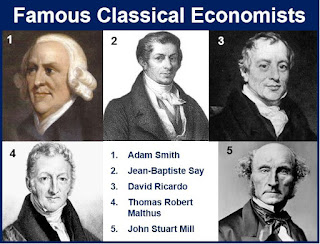SEBI (Securities and Exchange Board of India)
Securities and Exchange Board of India (SEBI). It is important that our capital markets have a strong and non-manipulative infrastructure. To ensure this, India has its capital market regulator, the Securities and Exchange Board of India – SEBI. We shall see the history, composition, powers and functions of the Securities and Exchange Board of India (SEBI) in detail in this post.
History of SEBI
SEBI was constituted on 12th April 1988 as an interim administrative body under the Finance Ministry. Four years later, on 4th April 1992 a notification awarding statutory powers to SEBI was issued (Securities and Exchange Board of India Act, 1992). Securities and Exchange Board of India, in its short journey of 25 years has made a remarkable impression on investors as well as capital markets.
All choices taken by Securities and Exchange Board of India are on the whole taken by its Board that comprises of a Chairman and eight different individuals. Also, Securities and Exchange Board of India selects different advisory groups, at whatever point needed to investigate the major problems of that time. Further, a Securities Appellate Tribunal – SAT has been established to ensure the interest of elements that vibe distressed by any of SEBI's choice. SAT, comprising of a Presiding Officer and two different Members, has similar abilities as vested in a common court. Further, assuming that any individual feels abused by SAT's choice or request can interest the Supreme Court.
Powers and Functions of SEBI (Securities and Exchange Board of India)
The Preamble of the Securities and Exchange Board of India describes the basic functions of the Securities and Exchange Board of India as “…to protect the interests of investors in securities and to promote the development of, and to regulate the securities market and for matters connected therewith or incidental thereto”.
Securities and Exchange Board of India is a quasi-legislative, quasi-judicial and quasi-executive body. It can draft regulations, conduct inquires, pass rulings and impose penalties.
Government has promulgated Securities Laws (Amendment) Second Ordinance, 2013 that would amend the Securities and Exchange Board of India Act, the Securities Contracts (Regulation) Act and the Depositories Act. With these amendments, Securities and Exchange Board of India will be able to regulate any money pooling scheme worth Rs. 100 crore or more and attach assets in cases of non-compliance. The SEBI Chairman would have the authority to order “search and seizure operations”. The amended law would also allow Securities and Exchange Board of India to seek information, such as telephone call data records, from any persons or entities in respect to any securities transaction being investigated by it. The law would further allow setting up of special courts to speed up SEBI related cases.
Changes Introduced By SEBI in capital market
T+2 trading settlement system.
De-materialization of share certificates (1999).
Banned entry loads for mutual fund schemes in 2009.
The task of giving approvals to FII registrations was handed over to SEBI in 2003. In order to discourage FII investments made through P-notes, Securities and Exchange Board of India has imposed sufficient checks and balances to avoid the flow of black money into the Indian markets.
Strict vigil on usage of IPO issue proceeds, greater disclosure by companies and their bankers and allotment of a minimum number of shares to retail investors. Keeping with the times, SEBI has also introduced e-IPO procedure for electronic bidding in public offers to help investors bid for shares in a cost-effective manner.
In 1996-97, Securities and Exchange Board of India directed all exchanges to fix the daily price band at 10% and a weekly overall limit of 25% to curb undesirable volatility. To bring about a coordinated trading halt in all equity and derivatives market nationwide, Securities and Exchange Board of India introduced an index based circuit breaker system applicable at 10%, 15% and 20% movement either way.
Securities and Exchange Board of India has a web-based centralized grievance redress system called SEBI Complaints Redress System – SCORES for assisting investors to lodge their complaints in a structured way.
NB : International Organisation of Securities Commissions- IOSCO under its Financial Sector Assessment Program – FSAP acknowledged that the comprehensive risk management framework prescribed by SEBI is one of the pillars of the Indian securities settlement system.
Securities and Exchange Board of India distinguishes itself from other regulators in India as it is a financially independent regulator with its own sources of revenue.
Powers of SEBI
For the release of its capacities proficiently, SEBI has been vested with the accompanying abilities:
To support by−laws of Securities trades.
To require the Securities trade to change their by−laws.
review the books of records and call for periodical gets back from perceived Securities trades.
review the books of records of monetary delegates.
urge specific organizations to list their portions in at least one Securities trades.
enrollment of Brokers and sub-specialists
SEBI departments
SEBI regulates Indian financial market through its 20 departments.
- Commodity Derivatives Market Regulation Department (CDMRD)
- Corporation Finance Department (CFD)
- Department of Economic and Policy Analysis (DEPA)
- Department of Debt and Hybrid Securities (DDHS)
- Enforcement Department – 1 (EFD1)
- Enforcement Department – 2 (EFD2)
- Enquiries and Adjudication Department (EAD)
- General Services Department (GSD)
- Human Resources Department (HRDM)
- Information Technology Department (ITD)
- Integrated Surveillance Department (ISD)
- Investigations Department (IVD)
- Investment Management Department (IMD)
- Legal Affairs Department (LAD)
- Market Intermediaries Regulation and Supervision Department (MIRSD)
- Market Regulation Department (MRD)
- Office of International Affairs (OIA)
- Office of Investor Assistance and Education (OIAE)
- Office of the chairman (OCH)
- Regional offices (ROs).
In next article I will talking about depository act and Sebi act.
Stay tuned and subscribe.





Comments
Post a Comment